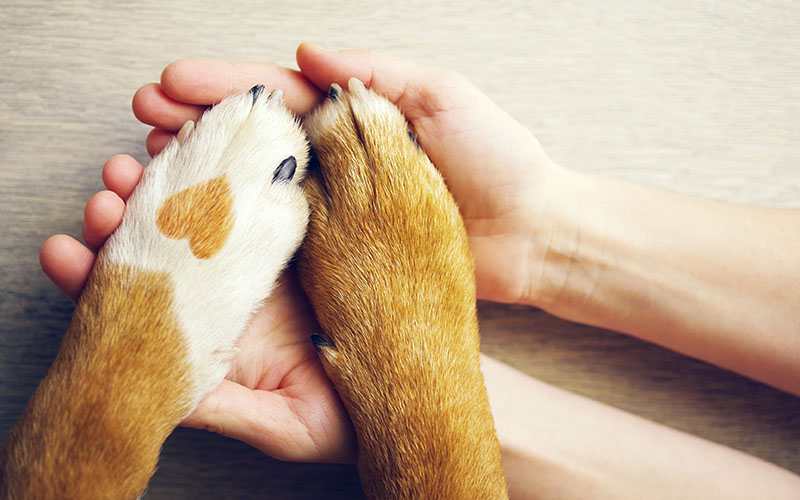
As a pet owner, your #1 goal is to ensure your furbaby has the best care for a healthy and happy life. You can easily do your part by giving them the love, attention, and food they need, but when they fall ill or have an accident, you have a completely different scenario on your hands.
Many times, these events are unexpected, so you don't have much time to prepare for the appointments and treatments that your pet will have to deal with. Along with the care needed, you'll also have to deal with the financial burden, and unfortunately, many of these visits come with high bills.
Aside from an emergency fund, pet insurance is one of the best ways to help cover the expenses of an emergency vet visit.
Finding the right pet insurance (or even deciding whether or not you need it) can be complicated. Below, we break down what pet insurance can -- and can't -- do for you and your furbaby.
Choosing Pet Insurance

If you decide to buy pet insurance, there are some important things you need to know:
Insure Your Pet As Soon As Possible
The best time to insure your pet is when your young so if you decide to get pet insurance, it's critical to get it as soon as possible. The main reason for this is that as your pet ages and develops health issues, insurance providers become reluctant to offer coverage. Additionally, pet insurance doesn't always cover pre-existing conditions or only covers them before your pet reaches a certain age, so finding a plan that pays for treatment after they fall ill may already be too late. Providers like Pumpkin cover older pets.
Decide On The Type Of Coverage You Need
Pet insurance plans come with multiple types of coverage:
- Accident and illness plans, which is the most common type of plan and covers accidents and illnesses such as cancer, infections, etc
- Accident-only plans, which covers accidents and injuries such as poisoning, ingestion of objects, and more
- Insurance with embedded wellness, which covers accidents, illnesses, and other services such as dental care, flea and tick medication, heartworm prevention, vaccinations, cremation and burial, etc
- Endorsements such as cancer and wellness add-ons
Accident and illness coverage is the most popular plan and typically the best plan when it comes to dealing with the most common issues for your pets and keeping a budget.
Take Your Pet's Breed Into Account
Your insurance premium and whether or not you receive coverage depends greatly on your pet's breed since some breeds are more likely to develop health problems (respiratory conditions, etc) than others. It's important to check if your pet is predisposed to specific illnesses and make sure that your insurance covers it.
Additionally, exotic pets (small mammals, birds, etc) can currently only get coverage from Nationwide so your options may be limited.
Compare Pricing
The price of pet insurance varies based on the type of pet you are ensuring, their breed, and your location.
Most pet insurance plans cost an average of $20 to $40 a month, depending on your pet and tier of coverage.
Compare quotes and read policies thoroughly to make sure your pet is getting the coverage they need. Ask for quotes from multiple companies, decide on the right deductible (the amount you have to reach before an insurance company pays your coverage), and compare pricing for vet visit fees, treatment and medication costs, and emergency room coverage.
When it comes to deductibles, decide on either an annual or incident deductible, which determines whether you will have future coverage after costs early in the year or if you’ll have to fulfill a later deductible.
Premiums (your monthly payment) may have a discount if you pay it upfront annually.
Limits are the most your insurer will cover, which may apply to all types of coverage or depend on the type of coverage (accidents, illnesses, etc).
How Pet Insurance Works

You'll have different tiers of coverage depending on the type of plan. Some plans have a cutoff age for coverage while others don't cover certain illnesses or hereditary conditions, so it's important to know what you're looking for and what gets covered.
Usually, there is a waiting period (around 14 days) before coverage begins.
Depending on the plan, you can receive coverage for one or more of the following:
- Accidents: These are unexpected incidents such as swallowing foreign objects, broken bones and teeth, burns, and poisoning.
- Alternative/holistic therapy: A treatment or therapy plan (acupuncture or chiropractic) for your pet.
- Congenital conditions: These are defects or conditions that are present from birth.
- Chronic conditions: These are recurring issues (allergies, cancer, hip dysplasia, etc) that are diagnosed in one plan period and require care in future plan periods.
- Exclusions: Items that are not covered in insurance plans, which are usually considered unnecessary (cosmetic treatments) -- although this is not always the case. Sometimes these items even include important coverage such as diabetic care or accidents and injuries caused by pet owners.
- Illness: A disease, infection, medical issue, or sickness that isn't accident-related, such as allergies, cancer, diabetes, heart disease, skin issues, and stomach issues.
- Hereditary conditions: Certain breeds are predisposed to specific conditions and illnesses so it's important to check if your plan covers these conditions or even add a deductible.
- Incident: This covers a medical event such as a vet exam or visit, follow-up visits, diagnostic materials, medications, hospitalization, and treatment plans.
- Pre-existing conditions: Most pet insurance plans don't cover pre-existing conditions (an undiagnosed illness or injury) before coverage starts, but they usually treat any curable diseases after a waiting period of three to six months.
- Wellness: This includes routine and preventative care such as dental care, fleas, heartworms, ticks, and vaccines. Most pet insurance companies can have this added to a plan or included in high-tier packages.
Not sure where to start? Check out our top providers here.
Can I get pet insurance if my pet is already sick?
Yes, although the expenses that come with treating the illness may not be covered immediately by the new plan. However, you'll receive coverage in the future.
What can pet insurance cover?
Pet insurance covers the unexpected illnesses, accidents, and treatments that your cat, dog, or exotic pet may face in their lifetime.
Is pet insurance worth the cost?
In most cases, yes -- pet insurance can pay for expensive treatments and procedures that you may have trouble covering out-of-pocket.
How does pet insurance work?
You pay a monthly premium for pet insurance and during a vet visit or emergency, the insurance will cover all or part of the bill.
Edited by:
Bryan Huynh
•
Product Tester & Writer
























